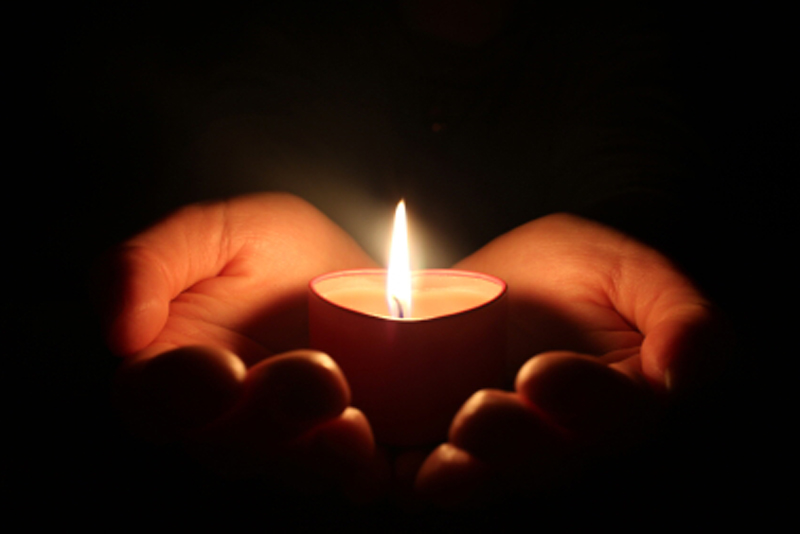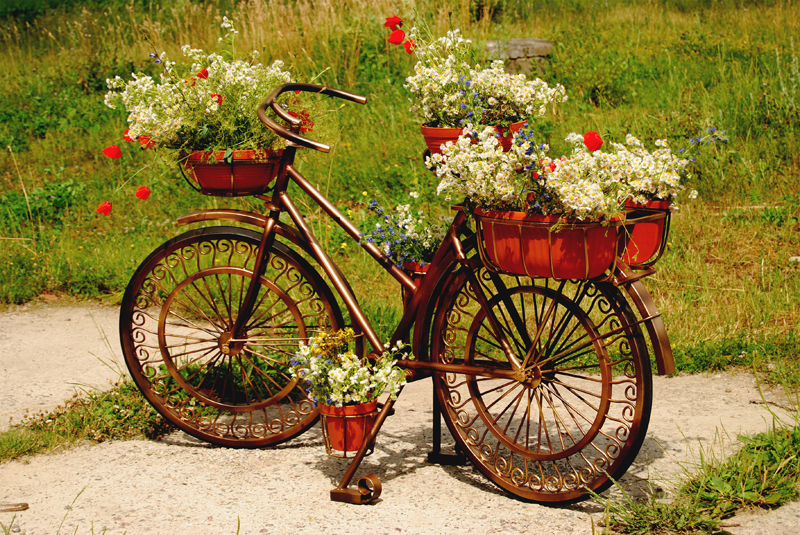Traditional Inside Seam Finishing

To acquire a few ideas of how the inside seams should look when finished on the inside of the garment, take a look at the inside of any quality ready-made garments. All seams will have some type of finished seam edges. Many times the seam edges have been finished by serging, as in knit or stretchy fabrics, however not every sewer will have this vastly practical time-saving machine.
Choosing what type of seam finish to apply, in the absence of a serger, depends largely on the type of fashion fabric used, the amount of time to devote to inside seam finishing, such as using hand or machine stitching, and how the garment will lay against the body. Important consideration should be given to seam finishing that will not warp or stretch the cut seam edge and a finish that will not show excessively through to the outside of the finished garment.
A few traditional seam finishes for use on woven fabrics follow in brief. There are many variations as well.
French Seams
For seam finishing a blouse or shirt made with very sheer or lightweight fabric, the most beautiful seam finishing is the French seam. Place the fashion fabric pieces wrong sides together and sew a seam about 3/8-inch. Press the seam along the side and any underarm edges so it is nice and flat. Trim with your straight-edge sewing shears to within about 1/8-inch very near the stitching line. Your blouse or shirt will now appear to have been sewn along the side with the seam edge outside and you have trimmed away almost all of the seam allowance edge up to the stitching line. Then, turn the garment wrong side out, fold down along the seam line crisply and lightly press the seam flat. The raw seam showing on the outside is going to be hidden inside the new seam. Now stitch the encased seam on the wrong side of the fabric about 1/8-1/4" away from the folded edge of the seam.
When you finish this stitch, turn your blouse right side out and you should see that your narrow raw edge has been hidden inside the seam you just stitched on the wrong side of the fabric. A final light press of this seam will relax any slight puckering the machine stitching may produce.
Flat-Fell Seam Edges
Frequently used on sportswear, menswear and reversible garments this seam finish is easy to do. The wrong sides of the fabric are placed together and a straight stitch is sewn usually 5/8-inch from the edge. Open the fabric up and press the now 5/8-inch seam allowances to one side. Trim one of the sides of the seam allowance to 1/8-inch then the other to become the top seam allowance to 1/4-inch, press to one side, then pin or baste in place over the shorter trimmed edge. Hand basting is recommended if the fabric is slippery and time allows, or machine edge-stitch close to the edge encasing the shortened underside seam allowance.
Hong Kong Encased Seam Edges
Thin bias fabric or silk is cut in narrow strips, then folded over each seam edge and hand or machine stitched in place. The fabric that will encase each seam edge can be coordinated to or in contrasted to the fashion fabric. Either choice will produce a finished couture look to the inside of an unlined garment.
Pinked Seam Edges
With pinking shears or rotary wavy type blades, trim the edges of the seam allowance, then press open. A quick and useful edge to the seams that will prevent fraying of the seam edges. Mostly effective on woven fabrics.
Zig-zag Seam Edges
If stitching the seam closed using a straight stitch, either stitch again close to the first stitching using a zig-zag stitch, then trim the seam allowance and press the resulting seam to one side or after stitching the seam, press the seam open and zig-zag the edges of each side of the seam allowance close to the seam allowance edges, careful to not catch the outer garment when applying this seam finish.
Turned Under Seam Edges, Machine Stitched
Each side of a raw edge seam allowance is turned under slightly, then stitched close to the edges. This technique is often found on coats and jackets made from a dense fabric, no lining to hide the seams, so the turned under and stitched seam edges gives a finished look to the inside of the garment.
Seam Edges Overcast By Hand
Mostly a couture technique, turning under each raw seam edge slightly and then overcast each edge using very small, evenly spaced hand stitches and a single thread is time intensive, but will reveal thorough attention to detail.
Whatever inside seam finish method is applied, the end result is to prevent fraying of seam edges during wearing and laundering, provides an often unexpected detail, as well as a sewer’s satisfying final touch to a garment carefully hand crafted.
Sew happy, sew inspired.
Choosing what type of seam finish to apply, in the absence of a serger, depends largely on the type of fashion fabric used, the amount of time to devote to inside seam finishing, such as using hand or machine stitching, and how the garment will lay against the body. Important consideration should be given to seam finishing that will not warp or stretch the cut seam edge and a finish that will not show excessively through to the outside of the finished garment.
A few traditional seam finishes for use on woven fabrics follow in brief. There are many variations as well.
French Seams
For seam finishing a blouse or shirt made with very sheer or lightweight fabric, the most beautiful seam finishing is the French seam. Place the fashion fabric pieces wrong sides together and sew a seam about 3/8-inch. Press the seam along the side and any underarm edges so it is nice and flat. Trim with your straight-edge sewing shears to within about 1/8-inch very near the stitching line. Your blouse or shirt will now appear to have been sewn along the side with the seam edge outside and you have trimmed away almost all of the seam allowance edge up to the stitching line. Then, turn the garment wrong side out, fold down along the seam line crisply and lightly press the seam flat. The raw seam showing on the outside is going to be hidden inside the new seam. Now stitch the encased seam on the wrong side of the fabric about 1/8-1/4" away from the folded edge of the seam.
When you finish this stitch, turn your blouse right side out and you should see that your narrow raw edge has been hidden inside the seam you just stitched on the wrong side of the fabric. A final light press of this seam will relax any slight puckering the machine stitching may produce.
Flat-Fell Seam Edges
Frequently used on sportswear, menswear and reversible garments this seam finish is easy to do. The wrong sides of the fabric are placed together and a straight stitch is sewn usually 5/8-inch from the edge. Open the fabric up and press the now 5/8-inch seam allowances to one side. Trim one of the sides of the seam allowance to 1/8-inch then the other to become the top seam allowance to 1/4-inch, press to one side, then pin or baste in place over the shorter trimmed edge. Hand basting is recommended if the fabric is slippery and time allows, or machine edge-stitch close to the edge encasing the shortened underside seam allowance.
Hong Kong Encased Seam Edges
Thin bias fabric or silk is cut in narrow strips, then folded over each seam edge and hand or machine stitched in place. The fabric that will encase each seam edge can be coordinated to or in contrasted to the fashion fabric. Either choice will produce a finished couture look to the inside of an unlined garment.
Pinked Seam Edges
With pinking shears or rotary wavy type blades, trim the edges of the seam allowance, then press open. A quick and useful edge to the seams that will prevent fraying of the seam edges. Mostly effective on woven fabrics.
Zig-zag Seam Edges
If stitching the seam closed using a straight stitch, either stitch again close to the first stitching using a zig-zag stitch, then trim the seam allowance and press the resulting seam to one side or after stitching the seam, press the seam open and zig-zag the edges of each side of the seam allowance close to the seam allowance edges, careful to not catch the outer garment when applying this seam finish.
Turned Under Seam Edges, Machine Stitched
Each side of a raw edge seam allowance is turned under slightly, then stitched close to the edges. This technique is often found on coats and jackets made from a dense fabric, no lining to hide the seams, so the turned under and stitched seam edges gives a finished look to the inside of the garment.
Seam Edges Overcast By Hand
Mostly a couture technique, turning under each raw seam edge slightly and then overcast each edge using very small, evenly spaced hand stitches and a single thread is time intensive, but will reveal thorough attention to detail.
Whatever inside seam finish method is applied, the end result is to prevent fraying of seam edges during wearing and laundering, provides an often unexpected detail, as well as a sewer’s satisfying final touch to a garment carefully hand crafted.
Sew happy, sew inspired.

Related Articles
Editor's Picks Articles
Top Ten Articles
Previous Features
Site Map
Content copyright © 2023 by Cheryl Ellex. All rights reserved.
This content was written by Cheryl Ellex. If you wish to use this content in any manner, you need written permission. Contact Cheryl Ellex for details.







